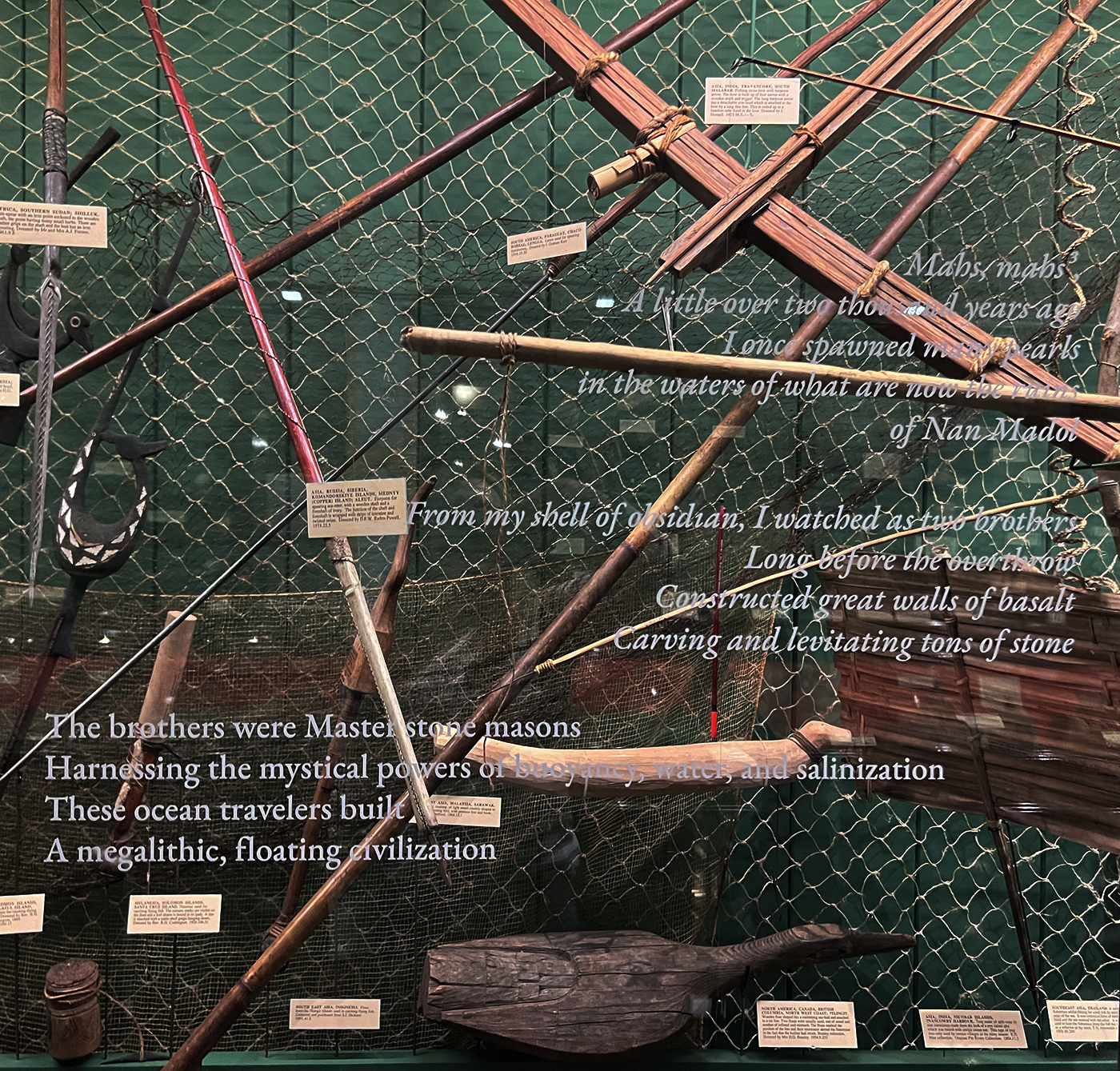Unfinished is a poem written by Carol Ann Carl, a daughter of the island of Pohnpei in the Federated States of Micronesia. With a background in Biochemistry and health, her community work revolves around Micronesian youth and women. Carol Ann was entrusted to be the keeper of traditional origin stories, which she shares through her writings. Storytelling and writing are personal forms of pedagogical healing.
Unfinished was commissioned by Marenka Thompson-Odlum, as part of the Digital Engagement & Innovation project. It exists both as written ‘concrete’ poetry and as a recorded spoken word piece. Unfinished is written from the perspective of the 31 pearl shell tools that the museum has described as ‘unfinished shell shanks of a fishing hook’ which were taken from the King’s tomb at the archaeological site of Nan Madol on Pohnpei. Nan Madol is a series of more than 100 islets off the south-east coast of Pohnpei that were constructed with walls of basalt and coral boulders. These islets harbour the remains of stone palaces, temples, tombs and residential domains built between 1100 and 1500 CE. These ruins represent the ceremonial centre of the Saudeleur dynasty, a vibrant period in Pacific Island culture. The huge scale of the edifices, their technical sophistication and the concentration of megalithic structures bear testimony to complex social and religious practices of the island societies of the period.
The field collector of the shell shanks, Frederick William Christian, was a graduate of Balliol College, Oxford. In his 1899 book, The Caroline Islands: Travel in the Sea of the Little Lands, he recounts the excavation of ‘Eighty pearl-shell shanks of fish-hooks in a more or less perfect condition, exactly resembling those used all over Polynesia before the coming of the white man. The hook itself was generally of bone, but we found some fragments of pearl-shell which were clearly relics of the barb.’
Christian was also a close friend of Robert Louis Stevenson when he lived in the neighbouring Pacific Island of Samoa. It was Stevenson who encouraged Christian to travel to remote groups of Pacific islands and study their languages. In his books, he often references Stevenson’s works such as Beach of Falesá.

